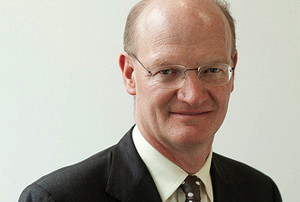UK Government earmarks £35m to boost robotics
The UK Government has announced plans to invest £35m to fund research into robotics and autonomous systems as part of a £600m programme to promote eight areas of science and technology that it believes will help to propel the UK’s future growth.
In addition, the Technology Strategy Board has launched a £1m competition to help accelerate concepts in which robots interact with each other and with humans.
The £35m will be used mainly to create centres of excellence in robotics and autonomous systems, located in and around universities, innovation centres, science parks and enterprise sites, with the aim of bringing researchers and industry together.

The new plans were announced by David Willetts, Minister for Universities and Science (above), in a speech in London. He was setting out details of the £600m programme first announced by the Chancellor in his Autumn Statement last year.
Willetts announced new investments totalling £460m, including:
♦ £45m for new facilities and equipment for advanced materials research in areas such as low-energy electronics, advanced composites, high-performance alloys and telecommunications;
♦ £30m to create r&d facilities to develop and test new grid-scale storage technologies;
♦ £25m to develop the Advanced Metrology Laboratory at the National Physical Laboratory in Teddington; and
♦ £189m for “big data” and energy-efficient computing.
In his speech, Willetts said that the Government needed to capitalise on the “unique” strengths of the UK’s research base by backing the right technologies and helping to take them through to market.
“Strong science and flexible markets is a good combination of policies,” he said. “But it is not enough. It misses out crucial stuff in the middle – real decisions on backing key technologies on their journey from the lab to the marketplace. It is the missing third pillar to any successful high-tech strategy. It is r&d and technology and engineering, as distinct from pure science. It is our historic failure to back this which lies behind the familiar problems of the so-called ‘valley of death’ between scientific discoveries and commercial applications.”
Turning to the decision to earmark Robotics and Autonomous Systems (RAS) as one of the eight key technologies, Willetts pointed out that, at the moment, “there is no single leading major industrial prime leading the development of the technology”. The Engineering and Physical Sciences Research Council funds much of the current research on RAS, but it has so many different applications across different industrial sectors that the r&d effort is fragmented.
Last October, Willetts convened a meeting of RAS experts to discuss what could be done to promote the technology. The discussion showed the need for greater co-ordination of research.
As a result, the Technology Strategy Board is creating a Special Interest Group on Robotics and Autonomous Systems that will soon produce an outline technology roadmap to promote future investment.
The participants in last October’s meeting also proposed academic centres of excellence that would conduct basic research and translate it for commercial application. The newly-announced £35m of funding will help to create such centres of excellence in robotics and autonomous systems in and around universities, innovation centres, science parks and enterprise sites. It will also support both university and industrial interests.
Willetts described support from such centres of excellence as “the missing link” between SMEs and primes in this area of technology. “They will be hubs of technical expertise and training, providing cutting-edge facilities and opportunities for business networking.”
In addition, the Technology Strategy Board is investing up to £1m in feasibility studies to accelerate the development of novel robotics and autonomous systems. A competition for this funding opens on 6 February.
The funding is aimed at feasibility studies to accelerate the development of RAS concepts where robots interact with each other and with humans. They use sensors to learn from their environment, adapting their behaviour and making choices based on their stored knowledge and experiences.
“We are in a global race to develop new innovations,” Willetts said, “and this competition will give researchers the freedom to explore early-stage ideas which can be demonstrated to potential investors and turned into commercially successful products.”
The TSB funding is for projects that develop early-stage and novel concepts to address identifiable challenges and to mitigate risks. All projects must be collaborative and led by an SME. They will last up to 12 months and each grant will be up to £133,000, although larger projects will be considered.





